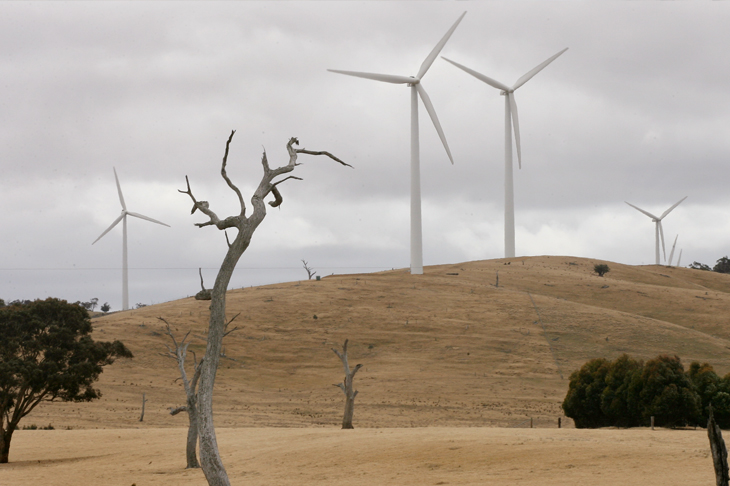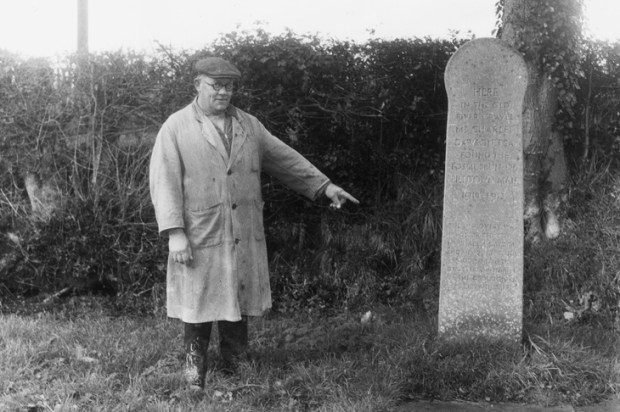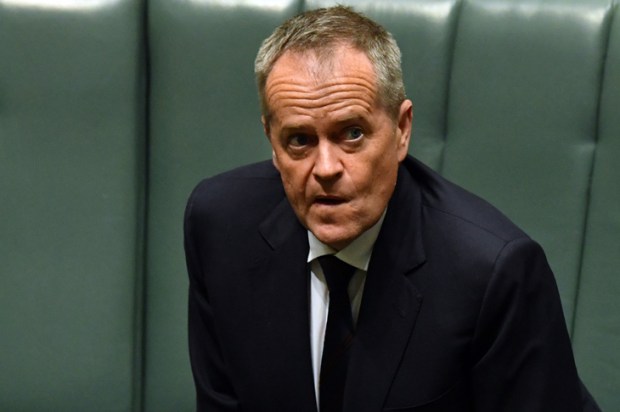‘I’ve looked at clouds from both sides now,’ crooned Joni Mitchell in 1969. If only the International Panel on Climate Change (IPCC) would take such a balanced approach. It admits that, ‘Probably the greatest uncertainty in future projections of climate arises from clouds and their interactions with radiation,’ but that hasn’t tempered its claim that clouds will dramatically accelerate global warming.
Nobel laureate in physics for 2022, Dr John F. Clauser, disagrees profoundly. He says clouds act as a natural thermostat, stabilising temperatures. What’s more, their impact is nearly two orders of magnitude greater than that of atmospheric carbon dioxide rendering the impact of the increase in CO2 trivial. This is why he confidently says, ‘There is no real climate crisis.’
Naturally, this good news hasn’t made it into the IPPC’s latest Summary for Policy Makers. How many Nobel laureates in physics does it take to change the IPPC consensus that the world has entered the era of global boiling? More than three it seems.
Dr Ivar Giaever, the 1973 laureate in physics resigned from the American Physical Society in 2011 in disgust over its official statement that ‘global warming is occurring’.
Dr Robert B. Laughlin, the Nobel laureate in physics in 1998, wrote in 2010 that, ‘The geologic record suggests that climate ought not to concern us too much when we’re gazing into the energy future, not because it’s unimportant, but because it’s beyond our power to control.’
Climate alarmists talk about a scientific consensus about catastrophic anthropogenic global warming but more than 1,600 scientists signed a statement last month stating that, ‘There is no climate emergency,’ and called for climate science to be less political, and climate policies to be more scientific.
‘Scientists should openly address uncertainties and exaggerations in their predictions of global warming, while politicians should dispassionately count the real costs as well as the imagined benefits of their policy measures,’ the statement says.
Instead of sober science, the world is awash with dangerous pseudoscience says Clauser because bureaucrats, business people, and politicians are easily snowed.
There is no doubt the owner of the largest number of renewable energy projects in Australia, Andrew ‘Twiggy’ Forrest, believes in global warming. He used the Boao Forum in Perth last month to warn of the terrors of ‘lethal humidity’ in which ‘you cook yourself’ to death in as little as 15 minutes because it’s too humid for your sweat to dry. ‘I’m not kidding about any of this,’ he told the audience. ‘This is proper referenced science.’
Forrest seems to be suffering not from lethal humidity but lethal hysteria. If he’d checked the referenced science he would have discovered that to prevent yourself from dying of heat stress in extreme humidity you don’t have to cover Australia in wind turbines, solar panels, batteries and transmission lines in an attempt to lower the global temperature, all you have to do is stay hydrated by drinking water.
Forrest’s hysteria is not lethal to him but it is to Australia’s Endangered, Vulnerable, and Near Threatened (EVNT) plants, ecosystems, and animals. A whistleblower field ecologist who worked on Forrest’s Clarke Creek Wind Farm in central Queensland revealed to conservation group Rainforest Reserves Australia last month that the ‘environmental degradation and loss of EVNT plants, ecosystems, and animals was astronomical’.
What most disturbed the ecologist was the failure of conservationists to protest. ‘Where were the Green groups when 3,000 hectares of vegetation was laid flat, where were the green groups when 400 hectares of semi-evergreen vine thicket (SEVT) was bulldozed?
Where were the green groups when koala, greater glider, powerful owl habitat was bulldozed.’ The ecologist says they personally contacted Green groups but ‘They didn’t want to know about it. Perhaps they were too busy hunting down a farmer for clearing his fence line,’ they said bitterly.
The silence of the Greens in the face of this environmental vandalism is deafening. Wedded to the narrative of a climate crucifixion and renewable redemption, they cannot bring themselves to admit that their Saviour – Big Wind – has feet of clay, or reinforced concrete.
The frontline in this battle is Chalumbin, located on the highly significant Western border of the spectacularly beautiful World Heritage-protected Wet Tropics, the largest surviving relict of the great Gondwanan forest that covered Australia 50 to 100 million years ago. It supports an exceptionally high level of biodiversity and is the only habitat for numerous species, with 380 plants and 102 animals that are rare or threatened. It covers less than 0.2 per cent of Australia but contains 30 per cent of its marsupials, 58 per cent of bats, 29 per cent of frogs, 20 per cent of reptiles, 58 per cent of butterflies, and 40 per cent of birds.
Incredibly, the Queensland government green-lit a proposal by Ark Energy, a subsidiary of Korea Zinc, the largest zinc and lead producer in the world, to pave this paradise and put up a wind turbine industrial complex with 146 kilometres of new roads up to the peaks where the tops will be blasted off, and 160,000 cubic metres of concrete will be poured to make steel-reinforced footings for 200 turbines.
In the face of a storm of outrage, this has been reduced to 42 turbines behind a one kilometre buffer zone, and in the ultimate attempt at cynical greenwashing the project has been given a new name.
But a one kilometre buffer zone won’t stop rare and threatened birds flying into the blades of the turbines. In nearby Kaban where turbines were pushed through in the greatest haste and started operating last September, the bodies of five migratory birds and two spectacled flying foxes were found beneath the turbines within a couple of months. More may have been taken by predators. Rare and threatened species that cross into Chalumbin will be killed on the new roads which will create erosion and provide access for weeds and feral pests to the wilderness.
It is uncertain how the ultra-low frequency noise the turbines emit will impact animals but people are suing companies because of the harm done to their health.
The saddest thing is that Ark Energy (which is anything but an Ark for these creatures) is only building the site because of the massive subsidies provided by carbon credits and by the guarantee that the state government will purchase the energy even when nobody needs it and there is no way to store it.
On its Facebook page, the Wet Tropics Management Authority noted that September is Biodiversity Month. ‘Throughout September we’ll celebrate by highlighting some of the immense biodiversity of the Wet Tropics World Heritage Area,’ it wrote. There’s not much to celebrate.
The irony is that the most acute threat to Australia’s biodiversity comes not from the slow warming of the atmosphere by CO2 but from the rapid construction of wind turbines in our most beautiful and fragile ecosystems. Instead of obsessing about reaching net-zero emissions of CO2 in 2050, we should concentrate on net zero extinction of flora and fauna in 2023.
Got something to add? Join the discussion and comment below.
Get 10 issues for just $10
Subscribe to The Spectator Australia today for the next 10 magazine issues, plus full online access, for just $10.
You might disagree with half of it, but you’ll enjoy reading all of it. Try your first month for free, then just $2 a week for the remainder of your first year.














Comments
Don't miss out
Join the conversation with other Spectator Australia readers. Subscribe to leave a comment.
SUBSCRIBEAlready a subscriber? Log in